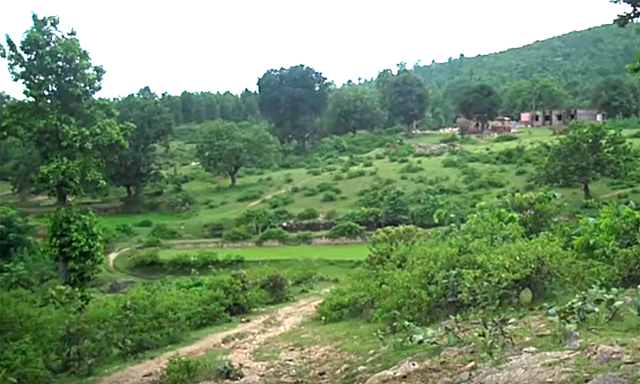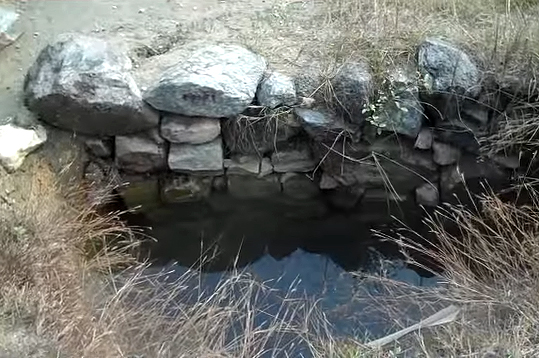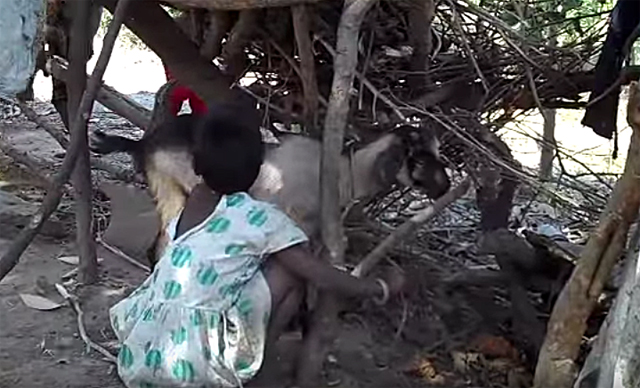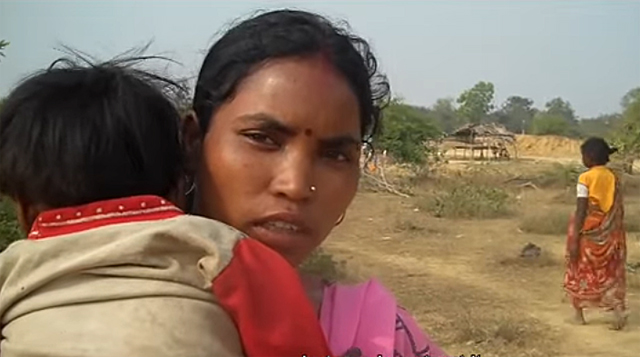A brief journal article published last month provides a thorough description of the poverty of a Birhor community in India. While not pleasant reading, the report is important because it does summarize the conditions under which the Birhor struggle.

Jai Kumar and Rajni Kant Kumar did a careful survey of the 55 Birhor families living in the village of Duru Kasmar, which is in the Mandu Block, Ramgarh District of Jharkhand State. They write that the Birhor in the hamlet they studied, part of Duru Kasmar village, still attempt to maintain their traditional economic activities, though they still suffer from extreme poverty.
Out of the 55 families in the hamlet, over three-quarters make their living from traditional work: 10 from rope making and another 33 from the sale of forest products in a nearby market town. The remaining 12 families receive funds through what the authors refer to as “social scheme,” presumably government welfare benefits. Many also engage in wage labor. The money they receive is mostly spent on food and clothing.

The Birhor children of Duru Kasmar as well as many adults suffer from diseases, in part because their water is very limited and what they do have is highly polluted. The wells they use are either on private land or dry up in the summer months. One well is not functioning at all. They also have access to three small ponds in the village but two of them dry up in the summer and none of them have water that is safe to drink.
The authors write that the people live in “kuccha” houses, facilities that an earlier article by Deborah Nadal had referred to as “pukka” houses. Toilets are not available for those individual houses and there is no drainage system for the hamlet. The lack of safe drinking water combined with the absence of toilets contribute to the prevalence of diseases.

Although most of the families have been settled for decades, the lands they live on have not been properly registered. There is space around their houses for them to raise some livestock, but only 8 of the 55 families keep even a few animals—15 chickens, 15 goats and sheep, and 13 pigs among them. Most of the households have government-issued BPL (Below the Poverty Line) ration cards and they take advantage of the public distribution system (PDS) in India to obtain 35 kg of rice every month.
Although the hamlet is close to a highway, there is no public or private transportation available. The Birhor walk to nearby market towns, either 5 km to one or 10 km to another. When crisis situations arise, such as a case of a snakebite or a woman goes into labor, there is no transportation to medical facilities. The children have no access to a school. More than 90 percent of the Birhor males in Duru Kasmar are addicted to alcohol.

The authors provide many suggestions for changes that administrators and the Birhor themselves should make to improve the lot of the people—technical training, financial assistance, and the like. Many of their suggestions seem quite reasonable, such as their emphasis on the notion that the residents should be included in the planning of new approaches to development. The Birhor of this community are unaware of their rights and they need to become involved and heard. They should not continue to be dependent on free grants and aid but should be offered opportunities that work for and empower them, the authors conclude.
Kumar, Jai and Rajni Kant Kumar. 2017. “Assessment of Development Plan and Protection for Birhor Community of Duru Kasmar Village, Mandu, Jharkhand.” IOSR Journal of Humanities and Social Science 22 (5), May: 77-82